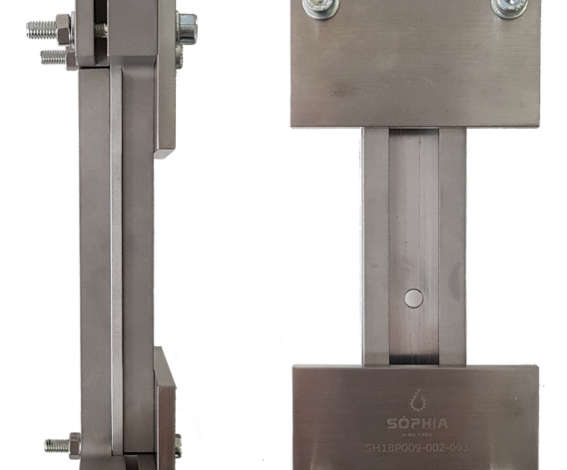
ASTM Standard D 5961 includes four distinct laminate bearing test methods, identified as Procedures A, B, C, and D. Procedure B is actually a specimen support fixture. The other three procedures, as will be described here, are pin bearing fixtures. PROCEDURE A: DOUBLE-SHEAR TENSILE LOADING Procedure A in ASTM D …
Thanks to this fixture, it is possible to test, double-edged, typically metal fasteners of various types and dimensions. A hardened tool steel blade, having an accurately toleranced cutout of the diameter of the fastener to be tested is inserted in a fastener support fork, having similar cutouts. There is a …
This fixture satisfies the requirements of ASTM D 5961 and has also been adopted by Composite Materials Characterization, Inc. as their standard fixture. This device consists of bushings located in housings that can be screwed and to accommodate different thickness specimens. The testing principle is the same for both the SACMA …
This method describes the temperature retraction procedure for rapid assessment of crystallization effects. In addition, it serves to compare the properties of the viscoelastic rubber materials at low temperatures and gummy. This method is very useful to make a selection of materials suitable for low-temperature service. A small sample of …
Since they have enlarged ends and reduced central cross sections, Split collar grips are typically used to tensile test round bar specimens. To aid in minimizing induced bending in the specimen, can be built spherical seats. There are a wide variety of specimen sizes and configurations in use. Exists another …
For Federal Test Method 406, Method 1041, this double cutting test method is intended for use in the determination of the shear strength of plastic materials. However, it is possible to test any material that the device is strong enough to handle. Is used a cylindrical specimen of ½ “in …
Every type of grip is designed and manufactured in accordance with the ASTM rules. The basic types of mechanical wedge grips are two. In both cases the gripping members move and wedges remain stationary while it is clamped on the sample, or wedges move tightening the sample and bodies of …


